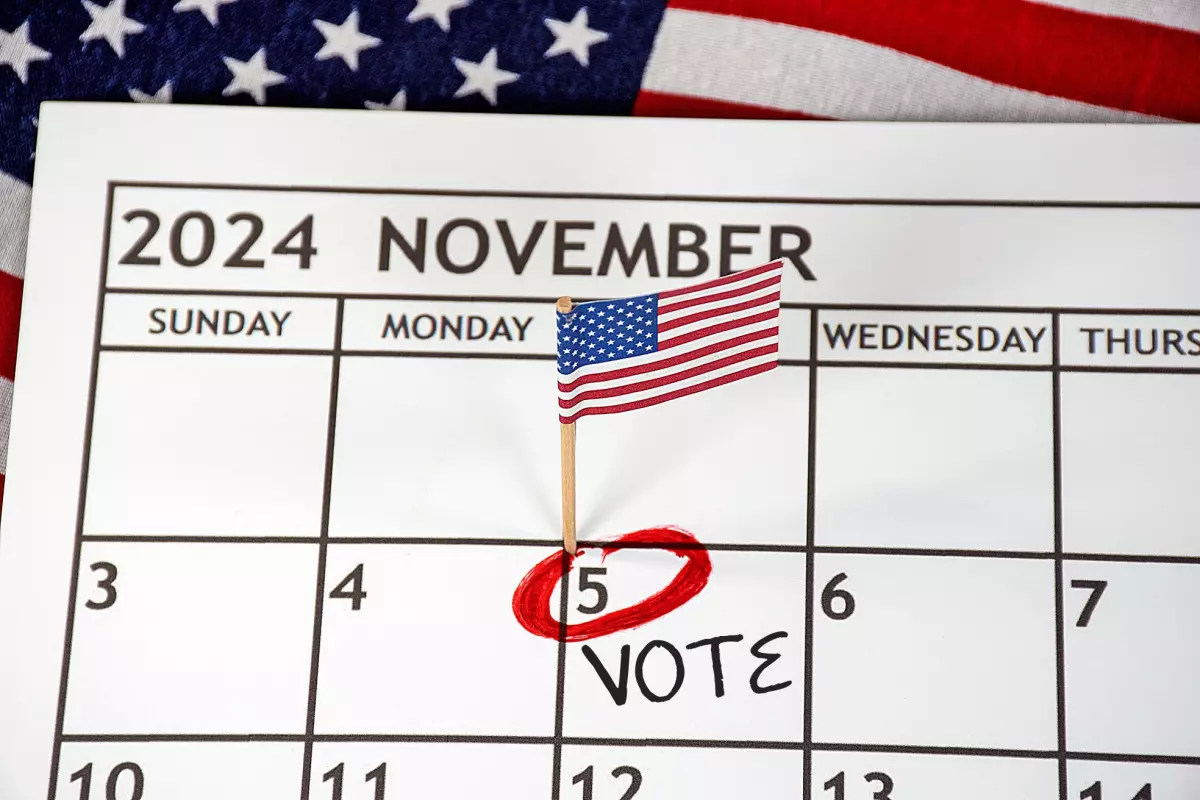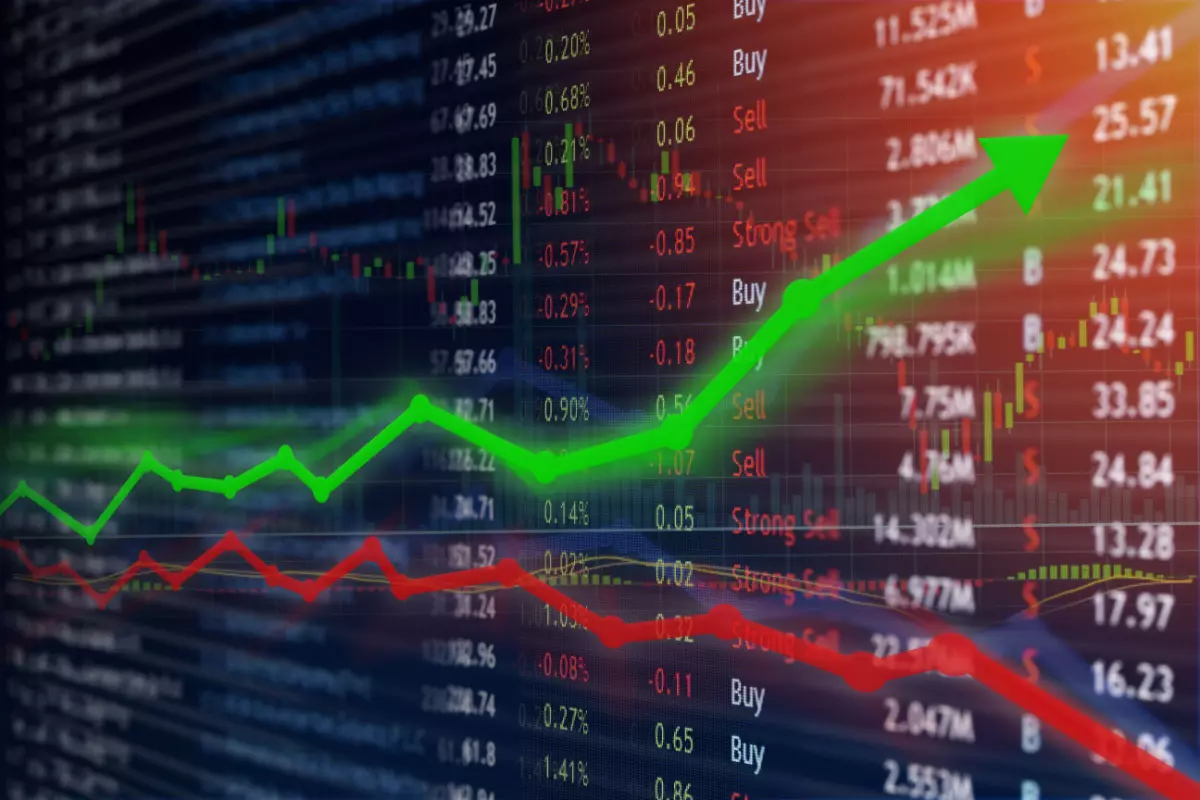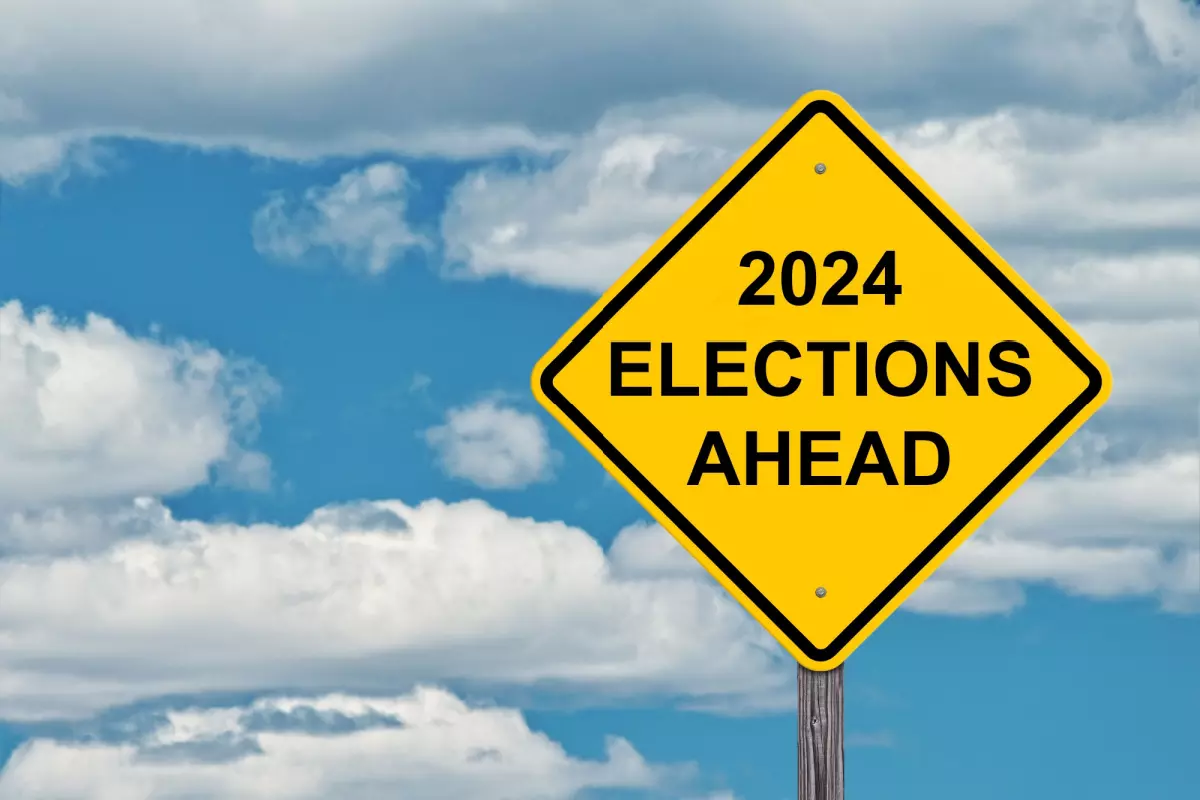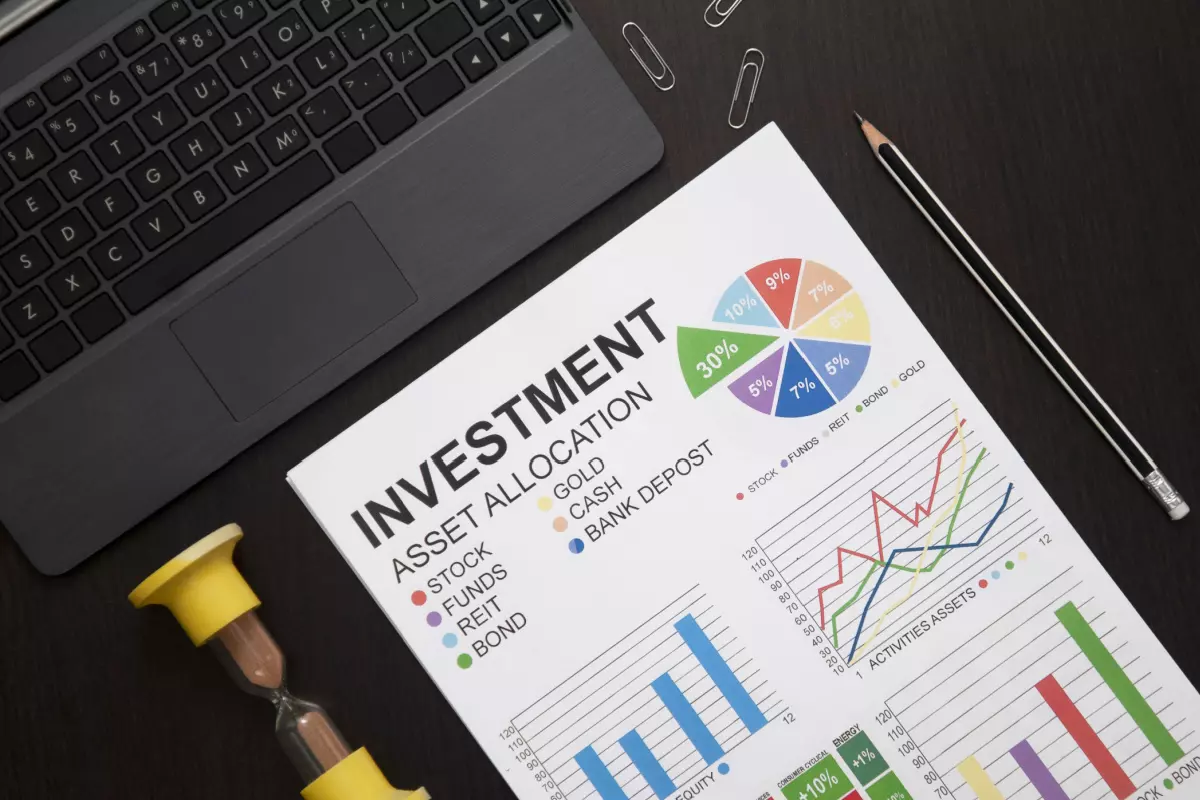Do presidential elections affect the stock market, or is that just a financial urban legend? Hold onto your portfolios – because the data might reshape your perspective.
Historical research reveals elections’ effect on the stock market, with the S&P 500 having positive returns in 17 of the past 23 election cycles.

Instead, investors may be surprised to learn that the political makeup of the presidency and Congress has more of an effect on the stock market. Based on historical data, we can observe that markets respond to election outcomes, with the stock market demonstrating better performance when certain parties control Congress and the presidency.
Read on to uncover the market behaviors that typically accompany election years, arming you with the knowledge to make smarter investment decisions during presidential and Congressional elections.
Presidential Election Cycle Theory
The Presidential Election Cycle Theory suggests that stock markets often underperform during the first two years of a presidential term. However, they tend to bounce back in the third year and may experience mixed performance in the fourth.
So, why is this relevant? Administrations often focus on economic growth measures in the third and fourth years of a presidential term, such as tax cuts or increased federal spending. These policies aim to boost consumer confidence, corporate investments, and job creation. As a result, the stock market frequently sees positive trends, offering a potentially profitable window for investors.
While theories like the Presidential Election Cycle provide a framework, they don’t cement market outcomes. Historically, data hasn’t shown a pronounced stock market decline following presidential elections. In fact, on average, annual returns were around 7.5% the year after an election, 5.8% the second year, and 16.3% the third year.
While minor market fluctuations occur, the overall trend remains positive. This discredits the notion that a new president will dramatically affect stock values. Investors should, therefore, balance historical insights with present market conditions for a more nuanced strategy.
Factors Influencing the Stock Market During Elections
Many underlying factors temporarily affect the stock market during election periods. As we dig into how the market moves during these periods, we’ll see it’s not just about who gets elected. It’s about the bigger picture: how the economy might change, how people investing their money are feeling, and how all this uncertainty can shake things up.

Let’s explore what really drives the market when the political stakes are high.
Economic Policies
Economic policies take center stage during elections, significantly swaying the stock market. Investors closely monitor the proposed policies of presidential candidates, gauging how these plans might influence economic growth, corporate profitability, and market stability.
For instance, policies favoring deregulation and tax cuts are often viewed positively by the market, as they can boost corporate earnings. Conversely, proposals for increased regulation or higher corporate taxes might trigger market caution, potentially leading to a downturn.
Investor Sentiment
Investor sentiment acts as the market’s pulse – it’s the collective mood or outlook of investors, shaped by their expectations of what’s to come. When investors feel confident about the future, perhaps due to a favored candidate’s lead in the polls, they tend to invest more, driving up stock prices.
On the other hand, if investors are worried about potential changes in policy that could affect their returns, they might sell off stocks, leading to a decline in the market. This sentiment can fluctuate wildly during the campaign trail, as every debate, poll, and political ad can sway investor confidence and, consequently, the stock market.
Market Reaction to Uncertainty
The market dislikes uncertainty, and election periods are full of it. When the future direction of government policy is up in the air, it can make investors nervous about potential risks, like an economic slowdown.
This anxiety can cause the market to shift as investors hold off on making big moves until they have a clearer picture. During this time, even a hint of instability or the prospect of policy changes that could slow down the economy might lead to more selling and less buying, which can make the market dip. So, in the run-up to elections, it’s common to see more temporary fluctuations in the stock market as it reacts to the possibilities of what might come next.
Analyzing the Impact of Presidential Elections on the Stock Market
While elections introduce uncertainty, historical data suggests that the winning candidate or party generally has a limited impact on stock market trends. Markets often follow similar trajectories following elections.
- Immediate Aftermath vs. Long-Term Trends: Historical data suggests that while the markets respond to elections immediately following an election, this response is temporary. For instance, studies show that in the days following an election result, there might be fluctuations – either due to a surprise outcome or market speculations – but these reactions don’t necessarily indicate long-term performance.
- Winning Party’s Limited Influence: The notion that a specific party’s victory, whether Democratic or Republican, would radically affect stock market performance doesn’t hold water. In fact, over extended periods, the market has shown resilience and consistent growth irrespective of the party in power. In 24 election years spanning between 1928 and 2020, the market showed favorable returns 20 times, with only four instances of negative returns.
- Re-Elections vs. New Entries: Does it matter whether a president is re-elected or a new face enters the office? In the stock market, not as much as you might think. Regardless of a re-election or a new president, the market has adapted to both scenarios without drastic long-term upheavals.
While elections certainly play a role in short-term market speculations, their influence on the long-term trajectory of the stock market is minimal.
The Historical Interplay of U.S. Elections and Stock Market Performance
While the spotlight is often on presidential elections, the overall political landscape also plays a role in stock market behavior. This includes the President and Congress and whether the government is unified or divided.

Various combinations can influence market trends, but historically, the market has remained positive regardless of different political configurations.
Unified Control: Same Party Dominance
While the stock market doesn’t experience significant turbulence during unified governments, historical data tends to point toward better returns during Democratic presidential and Congressional dominance.
Between 1929 and 2019, there were 45 years during which one party had unified control of the Presidency and Congress. In nearly four decades, the S&P 500 had an annual return of 7.45%.
In the 45 years, Democrats held unified control for 34 years with average returns of 9.4%, while Republicans were the controlling party for 11 years with a more muted average return rate of 1.5%.
Following Trump’s election in 2016, the Dow Jones Industrial Average (DJIA) experienced a rise of about 10% by March 2017. In 1992, during Democratic President Clinton’s era, the DJIA saw a rise of about 5%.
Democratic Leadership, Republican Legislature
Examining periods when a Republican Congress counterbalanced a Democratic president reveals interesting patterns. During Obama’s second term in 2014, the DJIA rose from 17,000 points in October to over 18,000 by March 2015.
A similar trend was observed during Clinton’s 1996 term, where the DJIA surged to over 7,000 by mid-March 1997 after Republicans assumed control of Congress. In fact, historical trends indicate that divided governments with a Democratic president and Republican Congress are the most favorable for U.S. stocks.
Also, during periods with Democratic presidencies and Republican Congress, the average return for the S&P 500 has been an astonishing 33.9%. This percentage is not a small feat and has consistently shown that when Democrats are in the executive branch and Republicans hold sway in at least one chamber of Congress, the stock market soars.
Republican Leadership, Democratic Legislature
Shifting perspectives to eras with a Republican president and a Democratic Congress offers another set of intriguing data points.
A positive market sentiment was observed when Democrats took Congress in 2006 during George W. Bush’s reign, with the DJIA appreciating by around 6.5%. This upward trend was consistent in 1990 during George H.W. Bush’s term, with the DJIA bolstering by about 16%.
Democratic President, Divided Legislature
Turning our gaze to times with a Democratic president facing a split Congress, data from the 2012 election period showcases the DJIA’s rise of about 7% by March 2013. A similar surge, around 14%, was observed after the 2010 elections, reaffirming that markets tend to react favorably under such political configurations.
This is not just a short-term phenomenon. According to a study by CFRA Research, from 1945 to September 2020, the stock market averaged an annual rate of return of 13.6% under a Democratic president with a split Congress. This long-term data adds weight to the shorter-term observations, painting a consistent picture of market performance under Democratic leadership coupled with a divided legislature.
Republican Leadership, Split Governance
The second best performing presidential and Congressional configuration has historically been during Republican presidencies with a split Congress. During these years, the stock market returned a remarkable 17.9%.
Specifically, the S&P 500 saw an average rise of 5% when a Republican president was in the White House and Congress was divided. Over the course of ten years, when a Republican president governed with a split Congress, the stock market climbed an average of 7.3%.
An expansive historical review spanning the past 75 years shows that irrespective of who occupied the White House, stocks performed best when political control of Congress was split, yielding an average annual return of a robust 12.9%. This evidence underscores the resilience and dynamism of the U.S. stock market in varying political landscapes.
Stock Market Performance Phases
As we’ve seen, the long-term effects of presidential elections are often less dramatic than one might expect. However, there might be unique shifts during each of the phases of a presidential election.

Often, these changes are small and short-lived, reinforcing our main finding that the stock market typically marches to its own beat, regardless of election outcomes.
Pre-Election Period
During the pre-election period, which typically covers the months leading up to November’s vote, investors often play a waiting game. They’re keeping an eye on the polls, and candidate promises, trying to guess how these might translate into economic policy.
Historically, the market tends to be cautiously optimistic, experiencing a temporary drop in returns. A review of market data for the S&P 500 going back to the 1930s shows that the performance of the market is typically more subdued in the year leading up to a presidential election.
The average gain is usually about 8.5% in any 12-month period, but in the year before an election, this dips to just under 6%. Typically, these declines are short-lived, rebounding after elections.
Election Day and Immediate Aftermath
On average, the market tends to experience a drop of about 0.92% the day after an election. These immediate reactions to the election results are typically short-term and do not necessarily predict long-term market performance.
The overarching conclusion is that, despite these initial reactions, the stock market aligns itself with broader economic trends over time, minimizing the long-term impact of election results.
Transition Period
After the dust settles from election day, the stock market enters a transition period as the outgoing president prepares to hand over the reins to the newly elected leader. This period runs from November to January and is characterized by a mix of anticipation and speculation.
During this time, investors closely watch the incoming administration’s policy outlines and cabinet appointments for clues about future economic direction. The stock market transition period after a presidential election can be a time of significant volatility as it adjusts to the potential changes in policy and leadership.
For instance, after the 2016 election, the market saw a 5.8% rise during President Trump’s transition into office, which was one of the best performances for any presidential transition period of the modern era. Conversely, during President Obama’s transition, amid the 2008 financial crisis, the S&P 500 fell by 15.5%, marking the worst performance during a transition period.
It’s important to note that while such periods can see heightened volatility, the overall long-term impact on the stock market tends to normalize. The market’s performance tends to be more closely tied to the broader economic environment and less to the shifting political winds.
Post-Election Period
Once a new president is inaugurated, the stock market often enters a post-election period that can last through the first 100 days or even beyond as the new administration begins implementing policy changes. Historically, stocks have typically welcomed new presidents with positive returns.
For the past eight out of 10 elections, the S&P 500 has risen during the first 100 days of a newly elected president. But it’s important to note that the market’s performance is not solely based on the change in the presidency. Nevertheless, this reinforces the notion that the stock market is relatively resilient during elections and remains positive post-inauguration.
Looking Ahead to 2024
As the 2024 elections get closer, it’s worth noting that the S&P 500 has proven to be a remarkably reliable barometer for election outcomes, boasting an 87% success rate since 1928 and a flawless 100% accuracy since 1984.

Here’s how the S&P can predict presidential election outcomes: S&P 500 increases in the three months before an election usually signal a win for the incumbent party, while a slump often signals a shift in leadership.
Should a Democrat secure the presidency in 2024, history suggests the stock market could respond favorably, particularly if the government remains divided. There was an average 14% increase during Democratic presidential years with a split Congress.
Even if Congress becomes a Republican majority, historical data has still indicated positive market returns when a Democrat president was elected. The S&P 500 has seen an average return of 18.3% during Democratic presidential and Republican Congressional years.
On the other side of the aisle, Republican victories have generally seen a warm reception from the stock market, mainly due to business-friendly policies. As stated previously, historical data shows that with a Republican president and a split Congress, the S&P 500 had an average return of 7.3% over a decade.
While it’s tempting to focus solely on election outcomes, experts caution that various factors beyond the political spectrum could influence the market landscape in 2024. Some analyses predict a stock market rally, suggesting investors might use this upward swing to rebalance portfolio risks. This indicates that broader economic trends could potentially overshadow the election’s impact.
Election’s Effect on The Stock Market: Investment Strategies for Consideration
Navigating the investment landscape during election years requires a diplomatic approach. Election-related news can bring heightened market volatility, but seasoned investors recognize that well-considered strategies can turn these fluctuations into opportunities.
Here are some investment approaches to help you make the most of an election season, insulating your portfolio from potential pitfalls and leveraging gains.
Diversification
The merits of diversification as a risk-mitigation strategy can’t be overstated. Spreading your investments across various sectors – technology, healthcare, and consumer goods – can buffer against sudden shifts in market dynamics, including those precipitated by elections.

For example, given its importance in defense and consumer markets, the technology sector often fares well, irrespective of election outcomes. On the other hand, renewable energy stocks might respond positively if a green-energy-friendly candidate wins an election. Balancing such sectors within your portfolio allows for a more stable investment landscape, irrespective of who takes office.
Hedging
When uncertainty looms, like during election cycles, hedging your investments becomes a sound strategy. Traditional safe-haven assets such as gold bars and coins and government bonds are often less susceptible to market volatility.
During the 2016 U.S. Presidential election, gold’s value surged, rising from approximately $1,060 per ounce at the start of the year to over $1,360 by July 2016. Gold’s price in the international market soared over 26%, outperforming nearly all other asset classes as investors sought more stable investment vehicles amidst the uncertainty.
Likewise, government bonds, especially U.S. Treasury Bonds, have historically served as reliable investments during uncertain times. For example, amidst the Great Depression in 1932, U.S. Treasury Bonds gave investors a substantial return of 8.79%.
Fast forward to the 2008 global financial crisis, and these bonds returned a remarkable 20.10%. Even in the less volatile years, the returns from these bonds have been generally positive and stable. The 1960 Kennedy vs. Nixon election saw a yield of 11.64%, while the 1992 contest between Clinton and Bush offered a 9.36% return.
Most recently, the 2020 election between Biden and Trump added another strong data point to this enduring trend, leaving many to worry about how the stock market will react if Trump is elected. In a year marked by global upheaval and a pandemic, U.S. Treasury Bonds offered a comforting 11.33% return.

Investing some of your money in stable assets like gold and U.S. Treasury bonds can help protect your portfolio during turbulent times, such as elections. Historically, gold has been seen as a safe-haven asset, retaining value during market downturns because it is not tied to any single economy or company.
Similarly, U.S. Treasury bonds are backed by the full faith and credit of the U.S. government, making them a favored low-risk asset. Their steady interest payments and principal return upon maturity add to their appeal, especially when the broader market is uncertain. As a result, both assets tend to be less affected by short-term market fluctuations, offering a more secure option when uncertainty is high.
Long-Term Perspective
It’s easy to get swept away by the whirlwind of short-term market reactions, especially during the emotional rollercoaster that is an election cycle. However, adopting a long-term perspective can be your best bet in such scenarios.
For instance, let’s take a closer look at the 2016 U.S. Presidential election. While stock market futures initially plummeted the night of the election, the S&P 500 index was up over 1% by market close the following day. Between 2017 and 2019, the average annual price return for the index was over 14%.
Why does this matter? Because a long-term investment strategy makes you less susceptible to knee-jerk reactions based on temporary market ups and downs. History shows us that despite short-term volatility around elections, the market tends to recover. By maintaining a long-term approach, you’re better positioned to navigate the choppy waters and potentially gain from the market’s inherent capacity for self-correction.
Final Thoughts
Historical trends reveal that presidential elections might stir short-term market volatility, but the long-term trajectory of the stock market after elections remains largely resilient to political changes. As the 2024 elections approach, investors are better served by diversifying their portfolios, considering safe-haven assets, and maintaining a long-term investment perspective rather than reacting impulsively to election-induced market fluctuations.
Making well-informed decisions by weighing both historical data and current economic indicators can help investors navigate through the election cycle while keeping their financial goals on track.
James Miller is a Senior Content Writer at McGruff.com. He has a background in investing and has spent most of his career in the financial industry. He can trace his family tree back to the California Gold Rush when his ancestors risked it all to make it big in the west. He feels like he's following in their footsteps as he strives to make sense of today's gold market.
